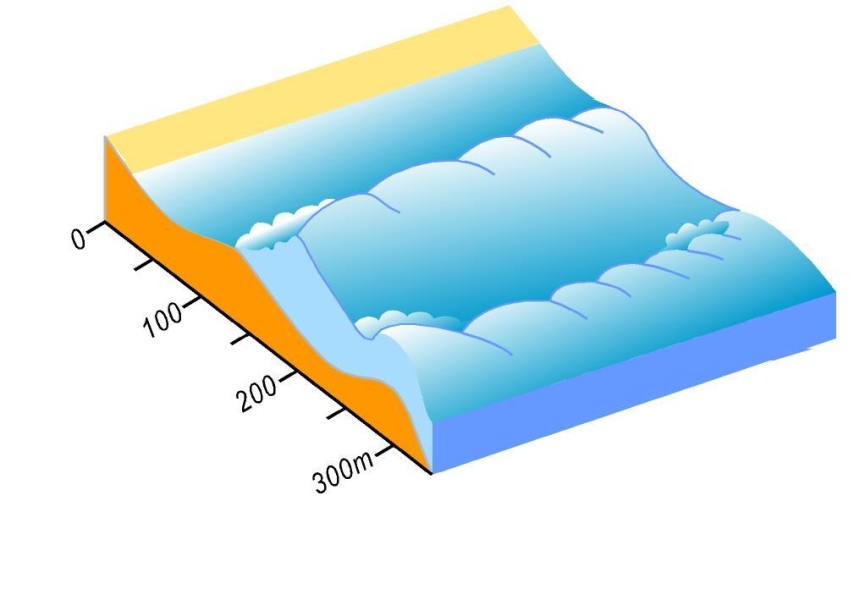Dissipative beaches are characterised as being high energy beaches with a wide surf zone (300-500 m) including two to three shore normal bars and troughs, and a low-sloping and wide beach face consisting of fine sand.
Breakers are typically 2-3 m high. On a dissipative beach wave break further offshore, waves then lose energy (dissipate) as they travel as a breaking bores across the wide surf zone. At a dissipative beach high waves and a wide surf zone restrict most bathers to the inner swash zone. Safest bathing at a dissipative beach is in the swash zone, however be aware that water levels will vary considerably between set-up and set-down. This is particularly a concern for young children who may be knocked over by the incoming set-up, or dragged seaward by the set-down.
Typical dissipative beaches: Oreti Beach, McCraken's Lookout, Orepuki Beach


